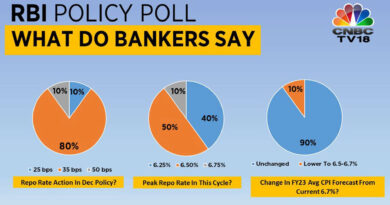Crystal ball gazing: The winning investment themes for 2024
Renewables and export-oriented sectors such as chemicals, APIs, and IT figure among the eight themes for a rewarding investing journey in 2024 and beyond.
In 2023, investors perhaps climbed mountains of worries to see the year end on a happy note, with the Fed’s dovish stance adding cheer to the year-end celebrations.
However, it would be amateurish to assume that the party would last forever. General elections in two of the world’s largest democracies, India and the US, decisive changes in monetary policy action guided by data points, signs of a meaningful slowdown in China, the world’s second-largest economy, and the continuation of geopolitical conflicts would add a fair dose of volatility that investors will have to grapple with.
To navigate yet another volatile year, we have selected eight themes, for a rewarding investing journey in 2024 and beyond.
Energy transition
Global demand for electricity is on the rise and decarbonisation efforts to tackle global warming and climate change are rapidly shifting the power- generation mix towards cleaner and greener energy sources.
According to the International Energy Agency (IEA), renewables are set to contribute 70-80 percent of new power generation capacity up to 2030 and the government spending in the pipeline will drive this shift in energy transition.
The renewable energy revolution is causing a modern-day gold rush and investors should look at tapping the massive growth opportunities throughout the value chain (solar, wind, water, hydrogen, grid, battery storage, etc.).
Exports at deep value
Export-oriented sectors, like chemicals, APIs and IT, have had a sharp correction since their October 2021 highs, in response to the unprecedented monetary- tightening cycle in key advanced economies which led to both demand contraction and valuation de-rating.
Now as the monetary cycle for most of the countries is expected to take a turn towards rate cuts in 2024, beaten-down export sectors/companies can be kept under watch. Meanwhile, some of these companies have invested in new capacities and products while keeping a check on balance sheet and focusing on China-plus and Europe-plus trends. In the next cycle of economic expansion, these names can disproportionately benefit.
Financialisation
Household savings have been moving away from physical assets (gold and real estate) towards financials assets. Interestingly, with rising inflation, households are seeking higher returns beyond fixed deposits with banks. While insurance, mutual funds and Nation Pension System (NPS) have seen growth in assets in recent years, savings are also getting channelised into capital markets through alternative investment funds (AIFs), portfolio management services (PMS) and directly through stock investments.
Thanks to the directed efforts at financial inclusion and digitalisation, we are seeing a strong growth in the number of demat account openings, robust inflows into equity mutual funds and rising retail participation in the equity market.
Housing (affordable and real estate)
The real-estate sector is on an upswing, driven by good housing demand. There has been a renewed interest in home ownership and upgradation of configuration and lifestyle, amidst the structural transformation, post- pandemic. The growth in housing is also being fuelled by credit availability.
Within housing finance, the affordable housing finance (small-ticket loans) segment is growing at a faster pace, backed by several government initiatives (interest subvention scheme, tax incentives, Housing for All by 2022, infrastructure status accorded to affordable housing, PMAY) along with regulatory push (priority sector status, lower risk weights on small ticket size loans).
Investment plays, including defence and railways
Investment, as a theme, has done great in the last year because of the front- loading by the government. This year, as well, investment in certain sectors, particularly defence and railways, will continue to drive growth because of the strong order inflows.
The government has made higher capital expenditure allocation for both the sectors. In fact, many large programmes and projects would come for awarding in 2024, keeping these companies in the limelight. The confidence also stems from the expected political and policy stability next year and thus the investment cycle, which is now accompanied by a sturdy growth in private capex, would continue to do well.
Manufacturing
Indian manufacturing activity picked up in 2023 and the momentum is expected to continue in 2024 as well. Electronics manufacturing growth acceleration is propelled by global brands’ China-plus-one strategy and import substitution effect.
The government’s policy support, such as the PLI (production-linked incentive) scheme, has helped in attracting investment in mobile manufacturing, OSAT (outsourced semiconductor assembly and test) and semi-fabrication facility set- up. The PLI scheme has now been widened to areas such as IT hardware, which is going to spur growth in the core sector as well as supporting industries.
Premiumisation
Despite pressure on consumption expenditure in 2023, owing to inflationary pressures, premium segments, such as jewellery as well as premium products in major consumption segments such as apparel, footwear, and automobiles, performed relatively well, indicating continued trend of premiumisation.
With rising income levels and gains from capital markets, a young population which demand more features and better quality as well as increasing digitisation, we expect a continued shift towards premium products in 2024. Apart from an increase in realisation, premiumisation would be a key driver for increased margins as well as earnings for the companies.
Travel & tourism
Travel has been on top gear since the post-pandemic days. What was construed as “revenge travel” is now becoming a long-term mega trend, with increasing number of households setting aside a dedicated travel corpus. Seasonality in business is also on the wane with long as well as short breaks keeping the industry participants busy throughout the year.
According to industry estimates, some 4.7 billion people are expected to travel in 2024, an historic high that exceeds the pre-pandemic level. With supply coming at a slower pace, hotels, airlines, luggage, and travel tech companies are on a dream run.
Bymoneycontrol




